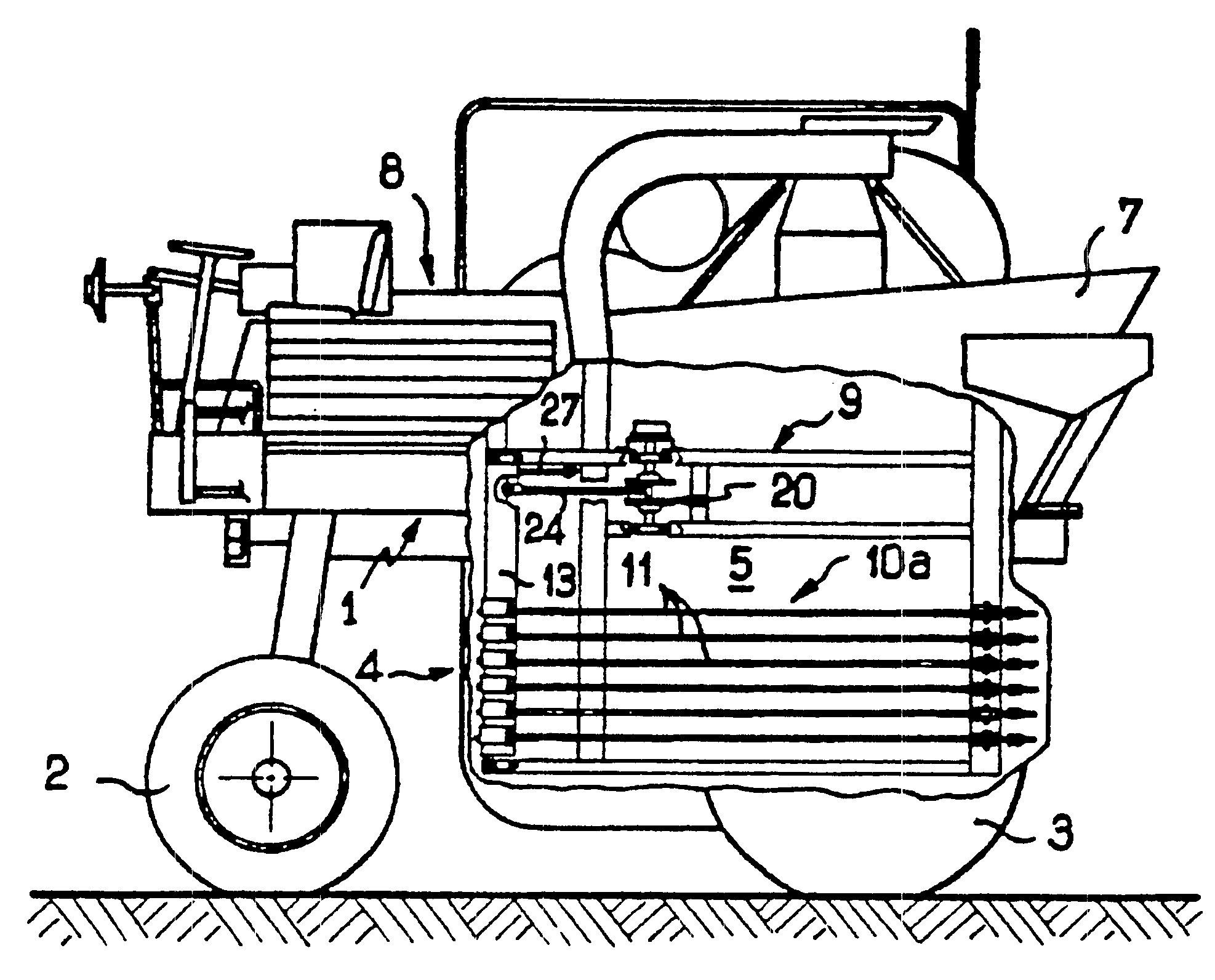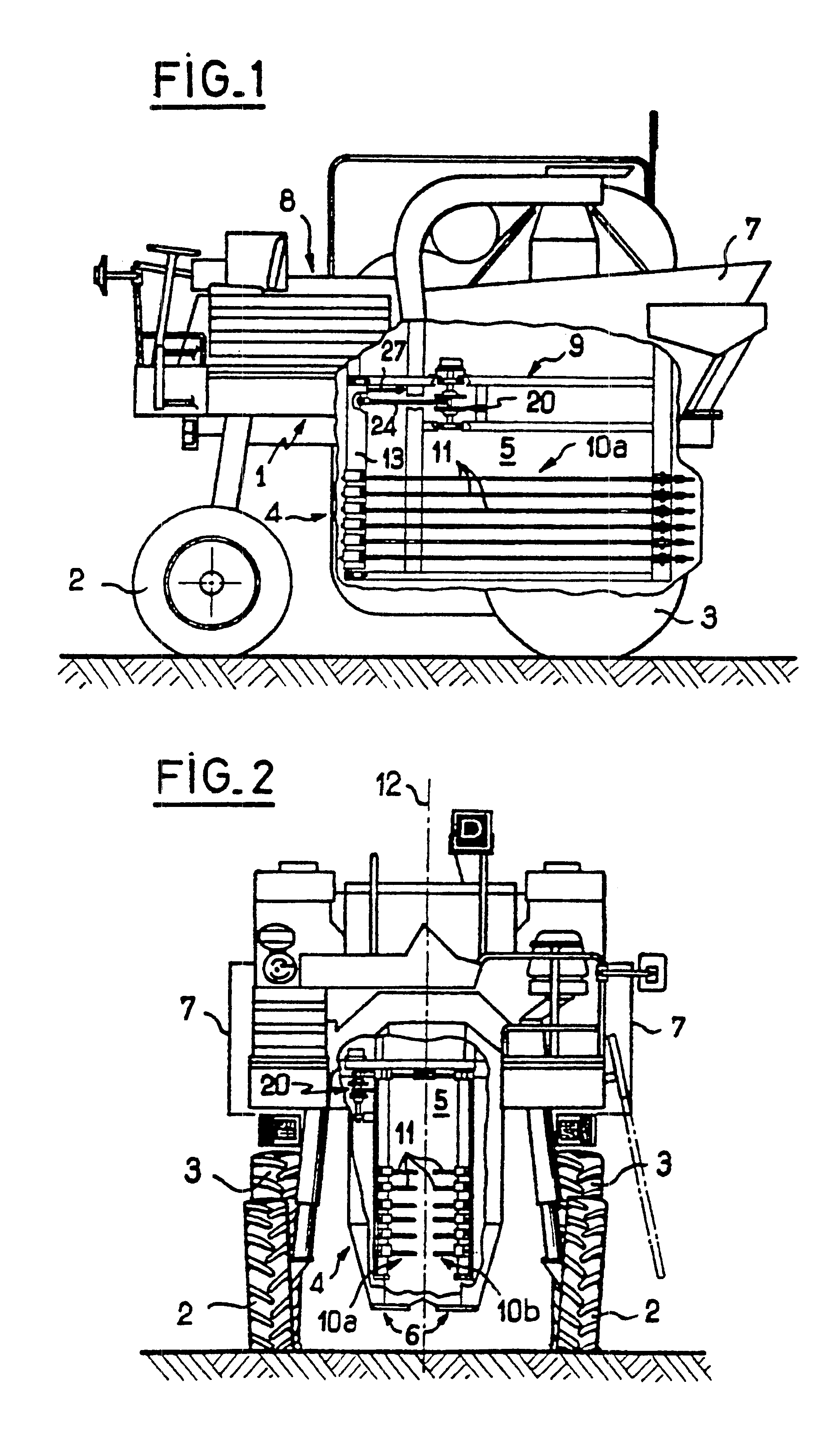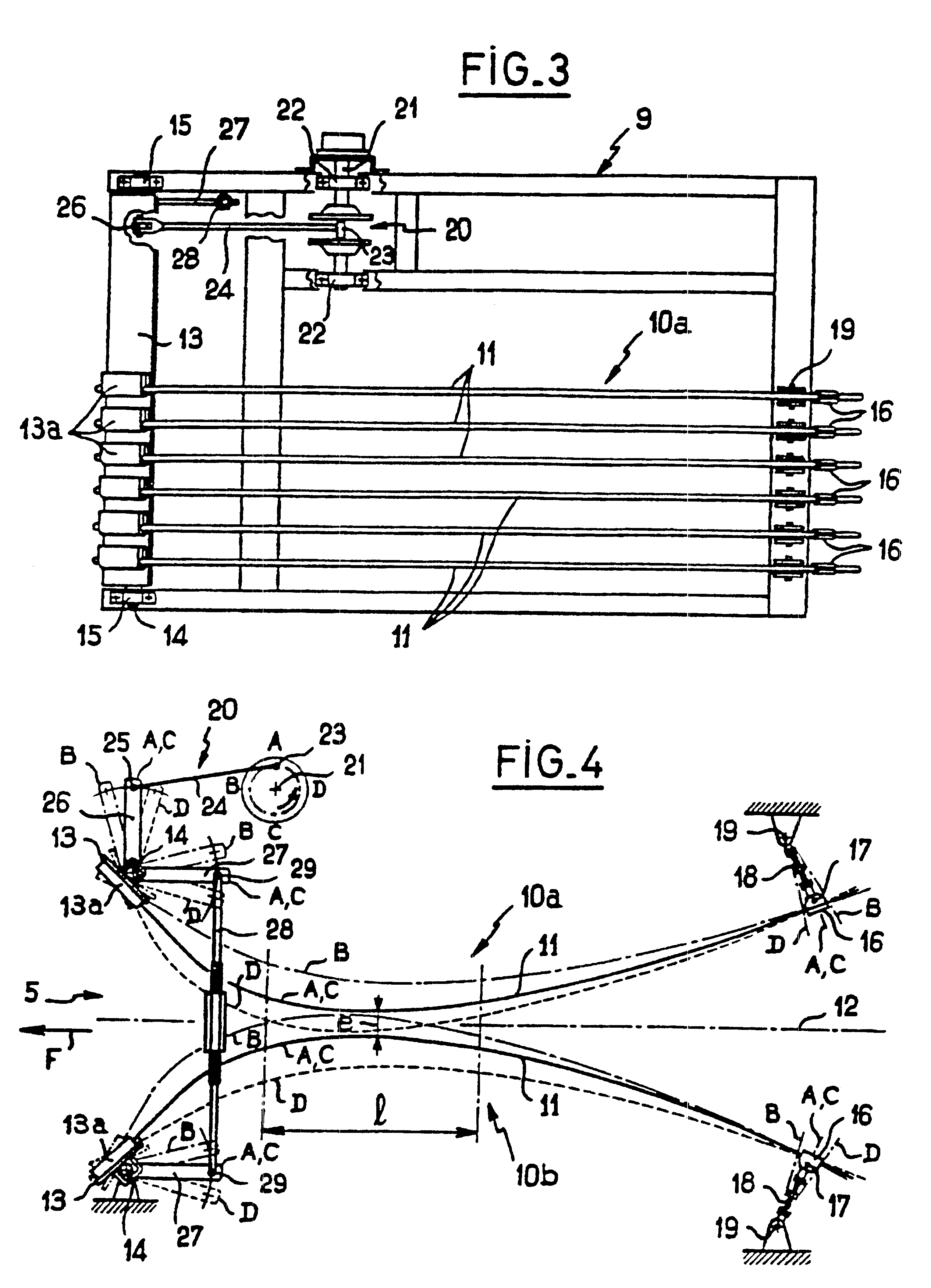Machine for harvesting fruit and berries and the like from fruit trees and bushes planted in a row, and shaker rod for a machine of this kind
a technology for a shaker rod and a machine is applied in the field of shaker rod for a shaker rod and a machine for harvesting fruit and berries and the like from fruit trees and bushes planted in a row, which can solve the problems of increasing the oscillatory movement and the speed of the active part of the shaker rod, aggravate the damage caused to the vine, and it is difficult to prevent unwanted vertical movemen
- Summary
- Abstract
- Description
- Claims
- Application Information
AI Technical Summary
Benefits of technology
Problems solved by technology
Method used
Image
Examples
example 1
A rod 11 was made from a single material, namely PA 6.6 polyamide (E=3300 N / mm.sup.2), and had a circular cross-section (FIG. 6) with a diameter of 30 mm and a length of 1.79 m. A wear u of 6 mm was to be tolerated (FIG. 14). Under these conditions, the rod had the following characteristics:
When new:
I.sub.y =I.sub.x =39 761 mm.sup.4
R.sub.x =R.sub.y =3E. I.sub.y / L.sup.3 =0.0856 N / mm
When worn:
I.sub.y =24 440 mm.sup.4
R.sub.x =0.0522 N / mm
When worn, the horizontal stiffness was therefore no more than around 61% of the stiffness when new.
example 2
A rod the same length as in example 1 was made as shown in FIG. 11. The is coating 32 had a diameter c of 27 mm and the core 11a had a major axis a 19 mm long and a minor axis b 13 mm long. The core 11a was made of glass fibers and polyester resin (E.sub.1 =40 000 N / mm.sup.2) and the coating 32 was made of PA 6.6 polyamide (E.sub.2 =3300 N / mm.sup.2). Again, a wear u of 6 mm was to be tolerated (FIG. 15). The moment of area I.sub.1y of the core 11a, which is given by equation (2) above, was the same when the rod was new and worn:
I.sub.1y =2 049 mm.sup.4
The horizontal stiffness R.sub.1x and the vertical stiffness R.sub.1y of the core 11a, which are given by equations (5) and (6) above, were the same when the rod was new and worn:
R.sub.1x =0.0429 N / mm and R.sub.1y =0.0916 N / mm
The moments of area I.sub.2x and I.sub.2y of the coating 32 when new are given by the equations:
I.sub.2x =.pi.(c.sup.4 -a.sup.3 b) / 64 (7)
I.sub.2y =.pi.(c.sup.4 -ab.sup.3) / 64 (8)
whence, in this case: I.sub.2x =21 7...
example 3
A rod the same length as in examples 1 and 2 had a shape similar to that of FIG. 11 but with the following dimensions:
a=18 mm; b=11 mm and c=25 mm.
The core 11a was made of carbon fiber and epoxy resin (E.sub.1 =130 000 N / mm.sup.2) and the coating 32 was made of polyurethane (E.sub.2 =60 N / mm.sup.2).
Under these conditions, the rod had the following characteristics: When new:
Here, when new, the horizontal stiffness R.sub.2x of the coating 32 represented only a negligible percentage (0.7%) of the global horizontal stiffness R.sub.x of the rod and the global vertical stiffness R.sub.y was twice R.sub.x.
When worn (u=6 mm).
In example 3, the global horizontal stiffness with 6 mm of wear represented 99.7% of the global horizontal stiffness when new. It can therefore be seen that, in this example, the wear had virtually no effect on the behavior of the shaker. Also, the global vertical stiffness R.sub.y was unchanged compared to the value when new and therefore remained twice R.sub.x. Also, ...
PUM
 Login to View More
Login to View More Abstract
Description
Claims
Application Information
 Login to View More
Login to View More - Generate Ideas
- Intellectual Property
- Life Sciences
- Materials
- Tech Scout
- Unparalleled Data Quality
- Higher Quality Content
- 60% Fewer Hallucinations
Browse by: Latest US Patents, China's latest patents, Technical Efficacy Thesaurus, Application Domain, Technology Topic, Popular Technical Reports.
© 2025 PatSnap. All rights reserved.Legal|Privacy policy|Modern Slavery Act Transparency Statement|Sitemap|About US| Contact US: help@patsnap.com



